
Smart Materials and Structures
Scope & Guideline
Pioneering Research in Smart Materials and Structures
Introduction
Aims and Scopes
- Smart Materials Development:
Research on the synthesis, processing, and characterization of novel smart materials, including piezoelectric, shape memory, and magnetorheological materials, aimed at enhancing their functional properties. - Structural Health Monitoring:
Studies focusing on the application of smart materials and sensors for real-time monitoring of structural integrity and performance, utilizing techniques such as electromechanical impedance and guided wave methods. - Energy Harvesting Technologies:
Exploration of innovative energy harvesting mechanisms using smart materials, such as piezoelectric and triboelectric systems, designed to convert ambient energy into usable electrical power. - Actuator and Sensor Integration:
Development of advanced actuators and sensors that leverage smart materials for various applications, including soft robotics, biomedical devices, and adaptive structures. - Multifunctional Materials:
Research on materials that provide multiple functionalities, such as self-healing, shape morphing, and energy absorption, through the integration of different smart material systems. - Modeling and Simulation:
Theoretical and computational studies aimed at predicting the behavior of smart materials and structures under various loading conditions and environmental factors.
Trending and Emerging
- 4D Printing and Responsive Structures:
The application of 4D printing technologies to create materials that change shape or function over time in response to environmental stimuli is increasingly prevalent, reflecting a trend towards dynamic and adaptive structures. - Bioinspired Materials and Designs:
Research inspired by biological systems is on the rise, focusing on the development of materials and structures that mimic natural mechanisms for improved performance and adaptability. - Smart Textiles and Wearable Technologies:
There is a growing interest in the development of smart textiles that integrate sensing and actuation capabilities for applications in healthcare, sports, and wearables, highlighting the intersection of fashion and technology. - Machine Learning in Materials Science:
The use of machine learning techniques for the design, optimization, and predictive modeling of smart materials is an emerging theme, enabling faster and more efficient material discovery and application. - Sustainability and Eco-Friendly Materials:
An increasing emphasis is being placed on the development of sustainable smart materials that minimize environmental impact, focusing on recycling, biodegradability, and energy efficiency. - Multimodal Sensing and Actuation Systems:
The integration of multiple sensing modalities and actuation mechanisms into single systems for enhanced performance and functionality is becoming a prominent area of research.
Declining or Waning
- Traditional Materials Research:
Research focusing solely on conventional materials without the incorporation of smart functionalities has become less prominent, as the field increasingly favors innovative adaptive materials. - Static Performance Analysis:
The trend towards dynamic and responsive behavior analysis has diminished the focus on static performance evaluations, as researchers seek to understand the real-time capabilities of smart materials. - Single-Function Applications:
Research concentrating on single-function applications of smart materials is declining, with a growing emphasis on multifunctional systems that integrate various capabilities into a single material. - Passive Structural Elements:
The exploration of passive structural components without smart capabilities is waning, as the industry moves towards active and semi-active systems that can adapt to changing conditions. - Conventional Manufacturing Techniques:
There is a noticeable decline in studies utilizing traditional manufacturing processes for smart materials, as additive manufacturing and advanced fabrication techniques gain prominence.
Similar Journals
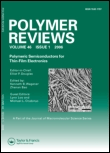
Polymer Reviews
Unveiling the complexities of polymer technology.Polymer Reviews, published by Taylor & Francis Inc, is an esteemed journal dedicated to the intricate and evolving field of polymer science. With its ISSN 1558-3724 and E-ISSN 1558-3716, the journal has established a significant presence among researchers and practitioners alike, evidenced by its impressive categorization in the Q1 quartiles across multiple disciplines, including Biomedical Engineering, Materials Chemistry, and Renewable Energy. Since its inception in 2006 and continuing through 2024, Polymer Reviews has consistently aimed to advance the knowledge base of polymer applications and innovations, providing a platform for comprehensive review articles that stimulate further research and inspire practical solutions. The journal, ranking within the top percentile across several Scopus categories, underscores its impact and relevance in a rapidly developing scientific landscape. Though not an open-access journal, it remains a vital resource for those invested in the future of materials science and engineering.
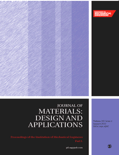
PROCEEDINGS OF THE INSTITUTION OF MECHANICAL ENGINEERS PART L-JOURNAL OF MATERIALS-DESIGN AND APPLICATIONS
Advancing Innovation in Materials Design and EngineeringPROCEEDINGS OF THE INSTITUTION OF MECHANICAL ENGINEERS PART L-JOURNAL OF MATERIALS-DESIGN AND APPLICATIONS is a prestigious academic journal published by SAGE PUBLICATIONS LTD, focusing on the dynamic fields of mechanical engineering and materials science. With an impressive impact factor reflective of its rigorous scholarly contributions, this journal serves as a vital platform for the dissemination of innovative research and practical applications in materials design and engineering processes. Since its inception in 1999 and continuing through 2024, it has maintained a robust reputation, achieving a Q2 ranking in both Materials Science (miscellaneous) and Mechanical Engineering categories, as well as commendable Scopus ranks that place it in the top percentiles of its fields. Located in the United Kingdom, the journal encourages submissions from researchers and professionals who are seeking to advance their understanding of materials applications while fostering interdisciplinary collaboration. Although it currently operates under traditional access terms, the journal prioritizes impactful research that addresses contemporary challenges in design and manufacturing, ensuring that it remains a must-read for anyone invested in the innovations shaping our technological landscape.

JOURNAL OF INTELLIGENT MATERIAL SYSTEMS AND STRUCTURES
Innovating the Intersection of Materials and Structural ApplicationsWelcome to the JOURNAL OF INTELLIGENT MATERIAL SYSTEMS AND STRUCTURES, a premier publication in the fields of Materials Science and Mechanical Engineering, published by SAGE Publications Ltd. With an impressive impact factor reflected in its Q2 quartile ranking in both categories, this journal serves as a vital resource for cutting-edge research and innovative applications in intelligent materials and structures. Since its inception in 1990, the journal has provided a platform for disseminating high-quality research, exploring the interplay between advanced materials and their structural applications. Researchers, professionals, and students alike will find valuable insights into current trends and discoveries, enhancing their understanding and fostering interdisciplinary collaborations. Although not currently offered as Open Access, the journal ensures rigorous peer-review standards, maintaining its relevance and credibility within the academic community. Whether you are searching for the latest advancements or seeking inspiration for your own research, the JOURNAL OF INTELLIGENT MATERIAL SYSTEMS AND STRUCTURES is essential reading for all invested in the future of material performance and intelligent systems.
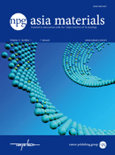
NPG Asia Materials
Navigating the Future of Materials with Expert PerspectivesNPG Asia Materials, a premier journal published by NATURE PORTFOLIO, stands at the forefront of research in the fields of condensed matter physics, materials science, and modeling and simulation. With an impressive Impact Factor gracing its Q1 rankings in 2023, this open-access journal, established in 2012, offers a vital platform for disseminating high-quality research articles, reviews, and perspectives that advance the understanding of material properties and innovative applications. Based in the United States and catering to a global audience, NPG Asia Materials features cutting-edge contributions that not only enhance academic scholarship but also provoke discussions relevant to both industry and academia. Researchers, professionals, and students are invited to explore its extensive archive of work, covering insights from 2009 to 2024, in a bid to stay abreast of the latest developments in these rapidly evolving scientific domains.

MATERIALS SCIENCE & ENGINEERING R-REPORTS
Advancing Knowledge in Materials Science and EngineeringMATERIALS SCIENCE & ENGINEERING R-REPORTS is a premier academic journal published by Elsevier Science SA, specializing in the fields of materials science and engineering. With a significant impact factor reflecting its standing—ranking in the Q1 category across multiple disciplines including Condensed Matter Physics and Materials Science—it serves as an essential platform for disseminating cutting-edge research and reviews from 1993 to 2024. Researchers and professionals alike benefit from rigorous peer-reviewed articles that encapsulate the latest advancements in material properties, mechanics, and applications. The journal, located in Lausanne, Switzerland, is indexed in Scopus, boasting impressive rankings that place it among the top-tier journals in its field. Although it does not offer open access, the high caliber of its contributions makes it a valuable resource for anyone engaged in materials research and engineering.
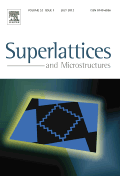
SUPERLATTICES AND MICROSTRUCTURES
Unveiling the potential of microstructured materials.SUPERLATTICES AND MICROSTRUCTURES is a premier journal dedicated to the exploration and dissemination of cutting-edge research in the fields of Condensed Matter Physics, Electrical and Electronic Engineering, and Materials Science. Published by Academic Press Ltd - Elsevier Science Ltd, this journal has established itself as an important platform for scholars and industry professionals to share their findings related to the design, fabrication, and application of superlattices and microstructured materials. With a commendable impact factor reflected in its rankings—positioned within the top quartile in Physics and Astronomy as well as Electrical and Electronic Engineering—it offers high visibility and influence in the academic community. The journal has covered significant contributions from 1985 to 2022, although access options have transitioned, making staying current essential for researchers and practitioners alike. This journal not only serves as a repository of knowledge but also fosters collaboration and innovation in materials science and related disciplines.

LIQUID CRYSTALS
Pioneering Discoveries in Soft Matter PhysicsLIQUID CRYSTALS, published by Taylor & Francis Ltd, is a premier academic journal dedicated to the interdisciplinary study of liquid crystal materials and their applications. Established in 1986, this journal has become a vital platform for researchers and professionals alike, contributing to advancements in chemistry, condensed matter physics, and materials science, as reflected in its notable impact factors and ranked status in multiple categories, including Q2 in Chemistry and Q3 in Condensed Matter Physics as of 2023. With a focus on innovative research and practical applications, LIQUID CRYSTALS spans a broad spectrum of topics, including but not limited to liquid crystal displays, photonics, and soft matter physics, making it an essential resource for those exploring the frontiers of liquid crystal technology. While the journal operates under a traditional access model, the rich insights and cutting-edge findings it publishes serve to greatly benefit researchers, professionals, and students in the field. Access the journal's content to stay updated on groundbreaking developments from 1986 to 2024 and join a community committed to scientific excellence.
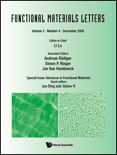
Functional Materials Letters
Connecting scholars in the realm of functional materials.Functional Materials Letters, published by World Scientific Publishing Co. Pte Ltd, is an esteemed academic journal dedicated to disseminating cutting-edge research in the field of materials science. Since its inception in 2008, the journal has provided a vital platform for researchers, professionals, and students to share their discoveries pertaining to functional materials, which are integral for diverse applications ranging from electronics to advanced manufacturing. With an ISSN of 1793-6047 and an E-ISSN of 1793-7213, the journal operates out of Singapore and maintains a notable presence in the global academic community, currently ranked in the Q3 quartile for materials science. Although it does not offer open access, the journal ensures that its publications are rigorously peer-reviewed, contributing significantly to the advancement of knowledge in this rapidly evolving field. Researchers aiming to stay at the forefront of materials science will find Functional Materials Letters an indispensable resource that highlights innovative findings and fosters collaboration among scholars.
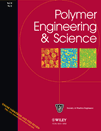
POLYMER ENGINEERING AND SCIENCE
Innovative Insights for the Polymer CommunityPOLYMER ENGINEERING AND SCIENCE, published by WILEY, is a premier journal specializing in the field of polymer science and engineering. Since its inception in 1961, this journal has been at the forefront of disseminating high-quality research, focusing on various aspects of polymers and plastics, including their chemistry, properties, and applications. With an impressive impact factor, it ranks in the second quartile (Q2) across multiple categories, including Chemistry (Miscellaneous), Materials Chemistry, and Polymers and Plastics, showcasing the journal's significance and influence in these vital areas of research. Researchers and professionals in academia and industry will find the latest advancements and innovative methodologies in polymer science, making this journal an essential resource for those looking to stay updated on cutting-edge developments. While it does not currently support Open Access, its comprehensive scope and critical insights positioned it as a valuable platform for advancing knowledge and fostering collaboration within the polymer community. The journal’s office is located at 111 River St, Hoboken 07030-5774, NJ, United States, emphasizing its strong presence in the academic landscape.

ADVANCED MATERIALS
Unveiling Breakthroughs in Nanoscience and BeyondAdvanced Materials, published by Wiley-VCH Verlag GmbH, is a premier academic journal that serves as a crucial platform for cutting-edge research in the field of materials science and engineering. With an impressive impact factor and ranking among the top tiers in various categories, including Materials Science, Mechanical Engineering, and Nanoscience, this journal is recognized for its high-quality contributions and relevance to contemporary research challenges. Spanning from 1989 to 2024, Advanced Materials not only features groundbreaking studies but also provides insights into innovative applications and advancements in material design and engineering. Researchers, professionals, and students alike will benefit from the rigorous peer-review process and diverse range of topics covered, making it an indispensable resource for those aiming to stay at the forefront of materials science innovation.